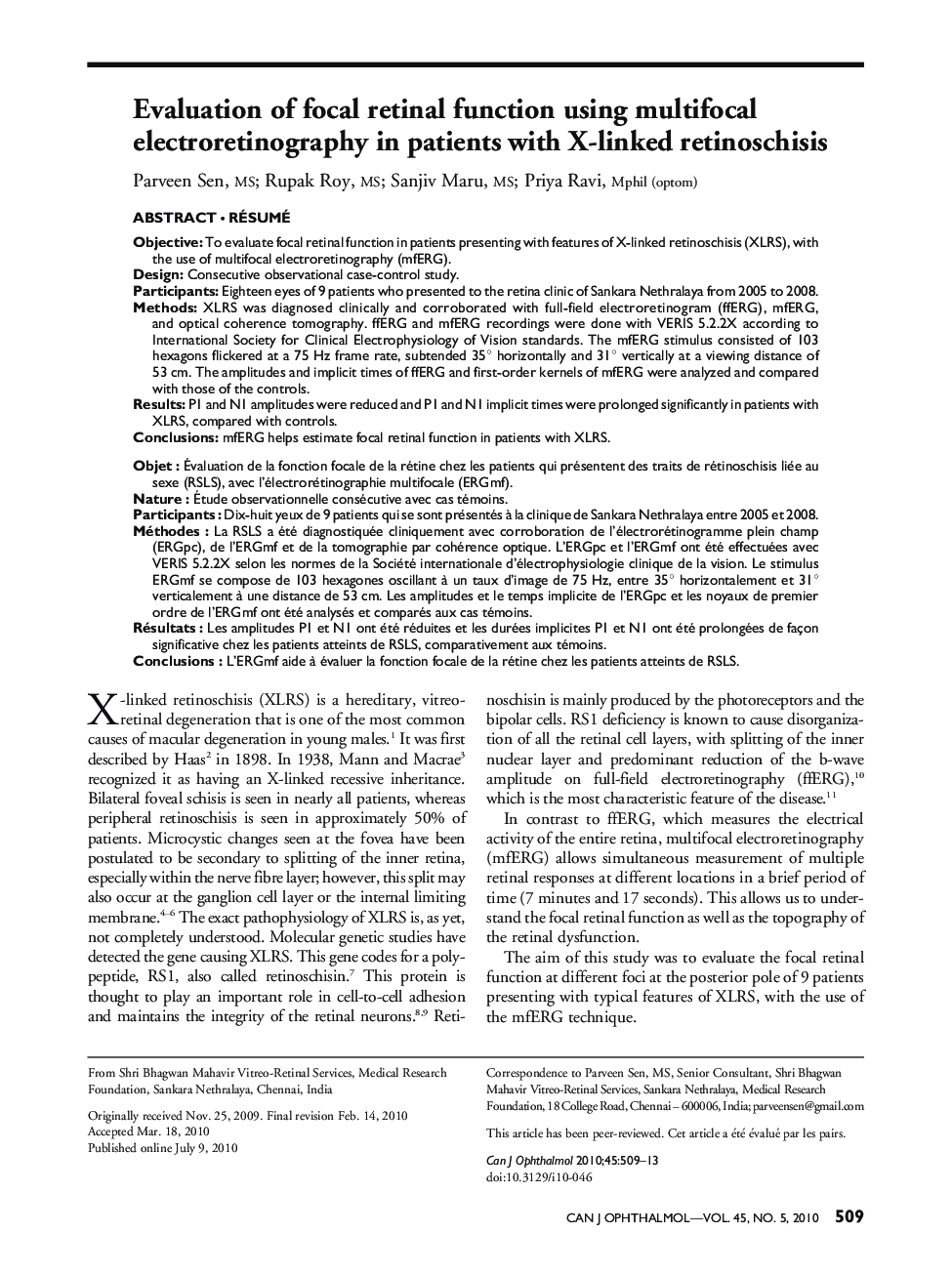| کد مقاله | کد نشریه | سال انتشار | مقاله انگلیسی | نسخه تمام متن |
|---|---|---|---|---|
| 4009793 | 1602427 | 2010 | 5 صفحه PDF | دانلود رایگان |

Objective: To evaluate focal retinal function in patients presenting with features of X-linked retinoschisis (XLRS), with the use of multifocal electroretinography (mfERG).Design: Consecutive observational case-control study.Participants: Eighteen eyes of 9 patients who presented to the retina clinic of Sankara Nethralaya from 2005 to 2008.Methods: XLRS was diagnosed clinically and corroborated with full-field electroretinogram (ffERG), mfERG, and optical coherence tomography. ffERG and mfERG recordings were done with VERIS 5.2.2X according to International Society for Clinical Electrophysiology of Vision standards. The mfERG stimulus consisted of 103 hexagons flickered at a 75 Hz frame rate, subtended 35° horizontally and 31° vertically at a viewing distance of 53 cm. The amplitudes and implicit times of ffERG and first-order kernels of mfERG were analyzed and compared with those of the controls.Results: P1 and N1 amplitudes were reduced and P1 and N1 implicit times were prolonged significantly in patients with XLRS, compared with controls.Conclusions: mfERG helps estimate focal retinal function in patients with XLRS.
RésuméObjet: Évaluation de la fonction focale de la rétine chez les patients qui présentent des traits de rétinoschisis liée au sexe (RSLS), avec l’électrorétinographie multifocale (ERGmf).Nature: Étude observationnelle consécutive avec cas témoins.Participants: Dix-huit yeux de 9 patients qui se sont présentés à la clinique de Sankara Nethralaya entre 2005 et 2008.Méthodes: La RSLS a été diagnostiquée cliniquement avec corroboration de l’électrorétinogramme plein champ (ERGpc), de l’ERGmf et de la tomographie par cohérence optique. L’ERGpc et l’ERGmf ont été effectuées avec VERIS 5.2.2X selon les normes de la Société internationale d’électrophysiologie clinique de la vision. Le stimulus ERGmf se compose de 103 hexagones oscillant à un taux d’image de 75 Hz, entre 35° horizontalement et 31° verticalement à une distance de 53 cm. Les amplitudes et le temps implicite de l’ERGpc et les noyaux de premier ordre de l’ERGmf ont été analysés et compares aux cas témoins.Résultats: Les amplitudes P1 et N1 ont été réduites et les durées implicites P1 et N1 ont été prolongées de façon significative chez les patients atteints de RSLS, comparativement aux témoins.Conclusions: L’ERGmf aide à évaluer la fonction focale de la rétine chez les patients atteints de RSLS.
Journal: Canadian Journal of Ophthalmology / Journal Canadien d'Ophtalmologie - Volume 45, Issue 5, October 2010, Pages 509-513